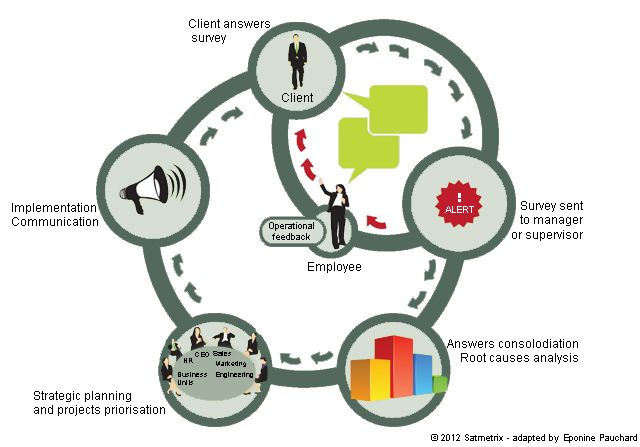
Last week, I introduced you to the ultimate question and the net promoter score. In this second article, I will dig a little deeper in the topic and introduce you to how this indicator can be exploited.
In the Net Promoter ® approach the ultimate question does not come alone. After the score given by the customer, a free comment box asks him or her: Why did you give our company this score ?
With the datamining tools, the analysis of the answers is quite easy. The goal is simple: beyond the score, understand.
Dig in those comment to find trends
Understand what makes our promoters happy: what are our strengths, what do our loyal customers value? Knowing these strengths and these elements helps to perpetuate them. Conversely, knowing what displeases detractors most guides the company in its prioritization of improvement projects. If 50% of the them have said: waited too long to have the product, then you know what you have to do …
The other key point of the approach is to finalize the feedback loop with customers. Especially with detractors. Those who have had a bad experience are called back by a manager. It is therefore important that this indicator and feedbacks are updated in real time, not compiled once a month.
Solve rapidely issues customer had
Once a client completes a survey with a low score, the report is sent to the manager of the person who last spoke with that client (in the case of the service sector) or to a manager. The manager can then study the file and talk with his employees to understand what happened. He then calls back the client to find out more about what went wrong and possibly find a solution. This quick feedback often improves the customer’s consideration of the company. On the other hand, the manager can work to improve the deficient process with his team. This feedback loop works very well in the service sector, whether to consumers or other businesses.

This approach is very similar to the jidoka used in production. As soon as a product has a defect, we stop the production area to understand what has happened and improve processes. When a downstream sector sees a default, it brings it back to the upstream sector, so that the latter can analyze and find solutions. Whether the customer is internal or external, the return of the customer is essential to move forward and improve.
Analyze the insatifaction as a defects your process made
On intellectual processes, it is more difficult to “see” defects. With this approach, service companies find a useful and simple tool to improve and take into account the expectations of their end customers. If the principles of operational excellence, with its tools and methodologies are well known to the manufacturing sectors, service companies begin their continuous improvement journey. They need tools adapted to their realities. Jidoka is not concrete enough, and this approach can help them become aware of the expectations of their customers.
In the analysis of the feedbacks, the same tools are used as for the defect analyzes: cause tree, 5 why, etc. The objective is similar: find the root cause to correct the problem at its source.

Receive quick feedbacks from customers and stop to immediately correct everything that may be, before further analysis. Jidoka or “close the feedback loop with the client” require responsiveness to be effective.
In my next article, I will present other uses of the net promoter score.
